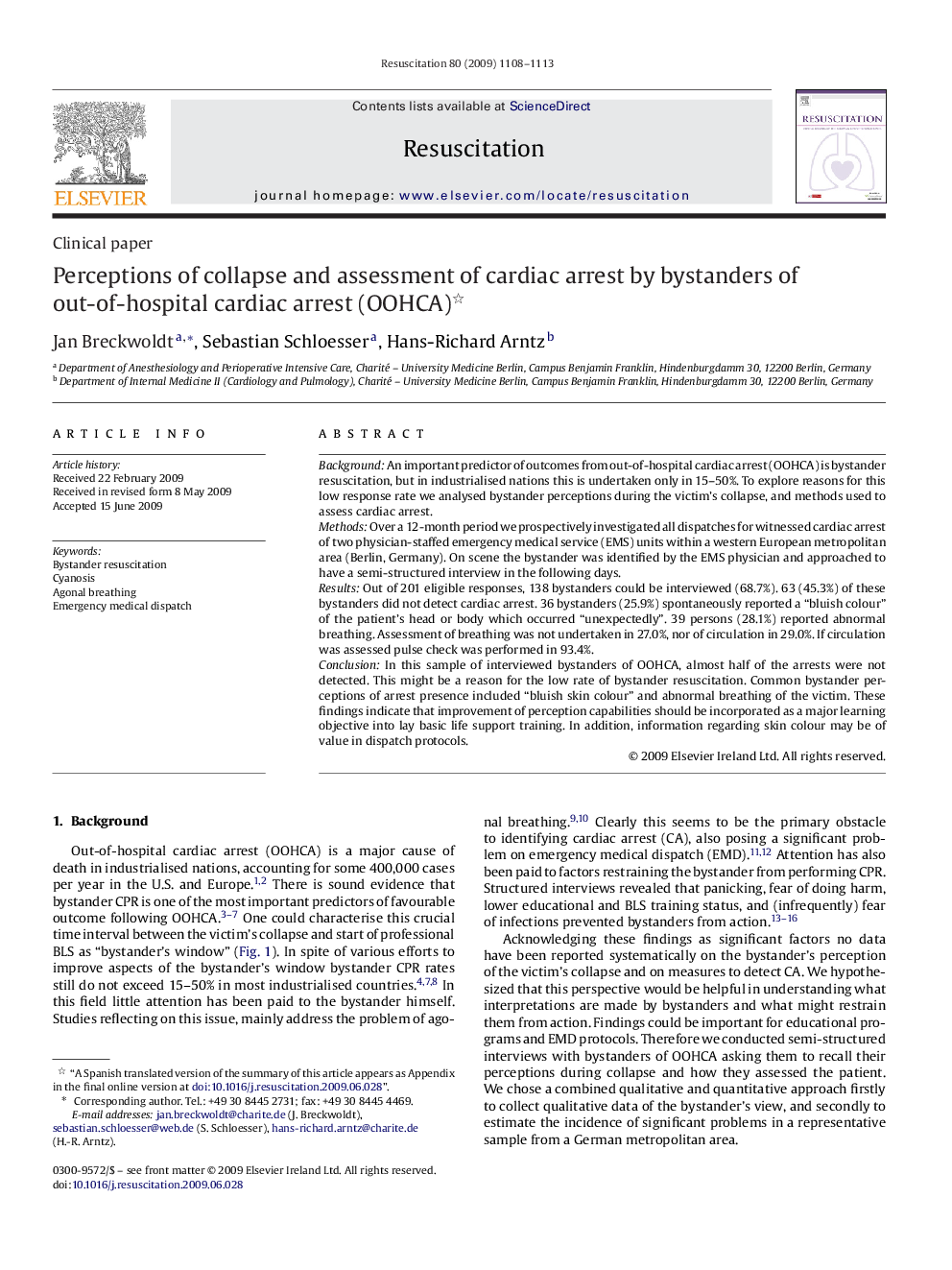| کد مقاله | کد نشریه | سال انتشار | مقاله انگلیسی | نسخه تمام متن |
|---|---|---|---|---|
| 3010857 | 1181534 | 2009 | 6 صفحه PDF | دانلود رایگان |

BackgroundAn important predictor of outcomes from out-of-hospital cardiac arrest (OOHCA) is bystander resuscitation, but in industrialised nations this is undertaken only in 15–50%. To explore reasons for this low response rate we analysed bystander perceptions during the victim's collapse, and methods used to assess cardiac arrest.MethodsOver a 12-month period we prospectively investigated all dispatches for witnessed cardiac arrest of two physician-staffed emergency medical service (EMS) units within a western European metropolitan area (Berlin, Germany). On scene the bystander was identified by the EMS physician and approached to have a semi-structured interview in the following days.ResultsOut of 201 eligible responses, 138 bystanders could be interviewed (68.7%). 63 (45.3%) of these bystanders did not detect cardiac arrest. 36 bystanders (25.9%) spontaneously reported a “bluish colour” of the patient's head or body which occurred “unexpectedly”. 39 persons (28.1%) reported abnormal breathing. Assessment of breathing was not undertaken in 27.0%, nor of circulation in 29.0%. If circulation was assessed pulse check was performed in 93.4%.ConclusionIn this sample of interviewed bystanders of OOHCA, almost half of the arrests were not detected. This might be a reason for the low rate of bystander resuscitation. Common bystander perceptions of arrest presence included “bluish skin colour” and abnormal breathing of the victim. These findings indicate that improvement of perception capabilities should be incorporated as a major learning objective into lay basic life support training. In addition, information regarding skin colour may be of value in dispatch protocols.
Journal: Resuscitation - Volume 80, Issue 10, October 2009, Pages 1108–1113